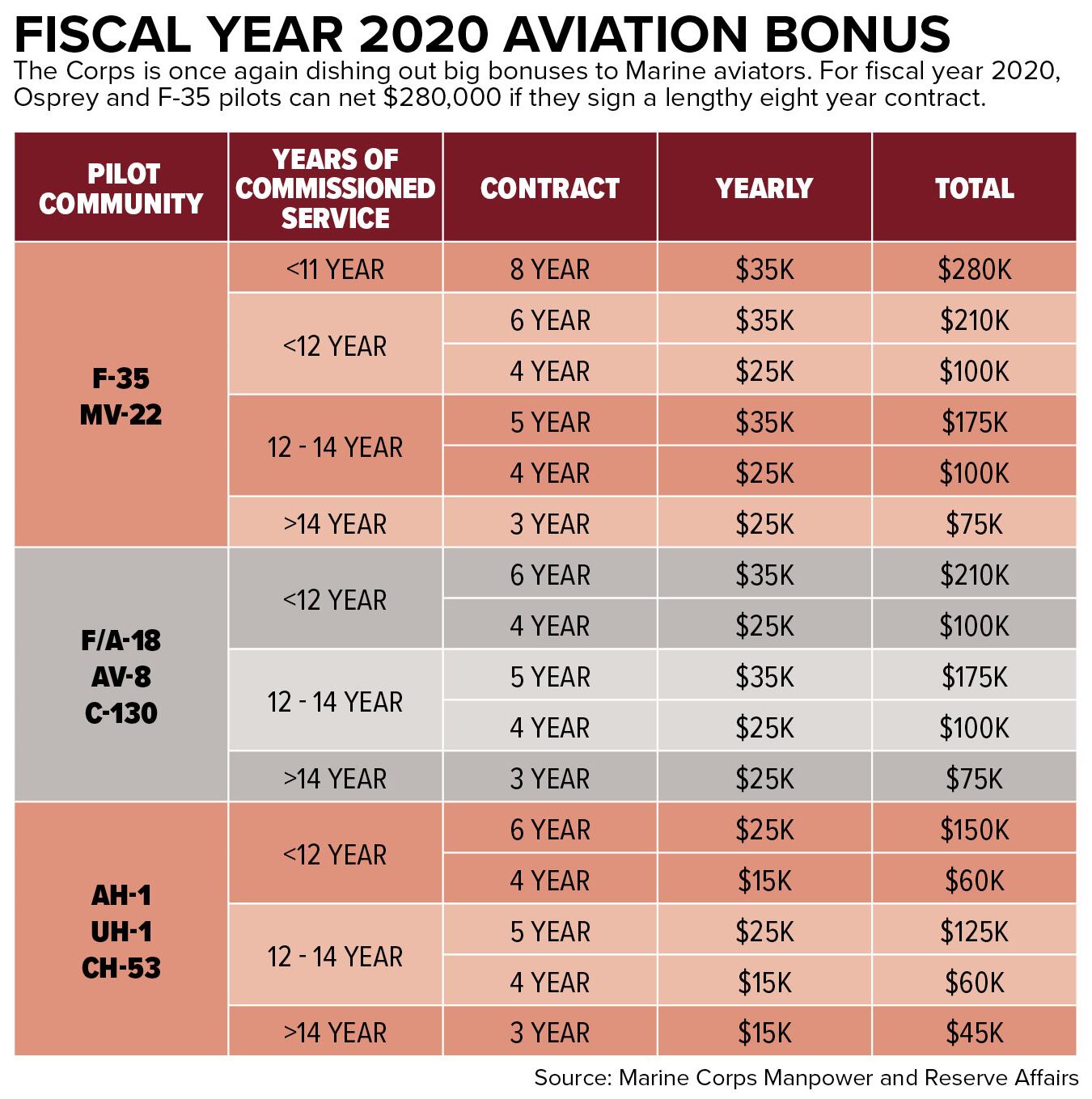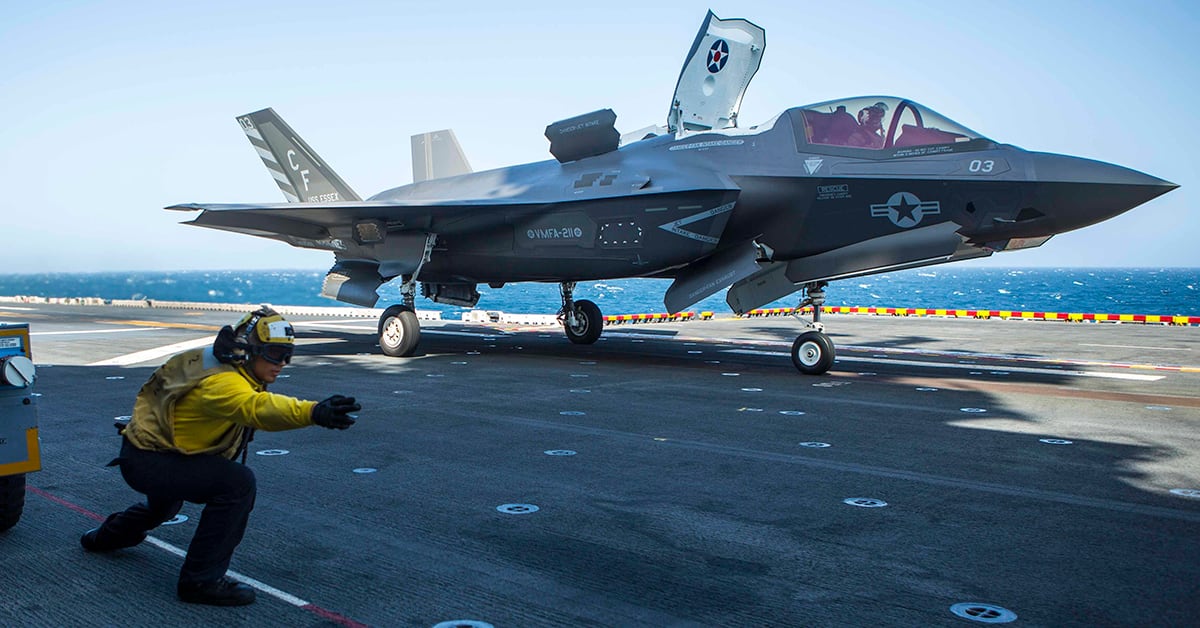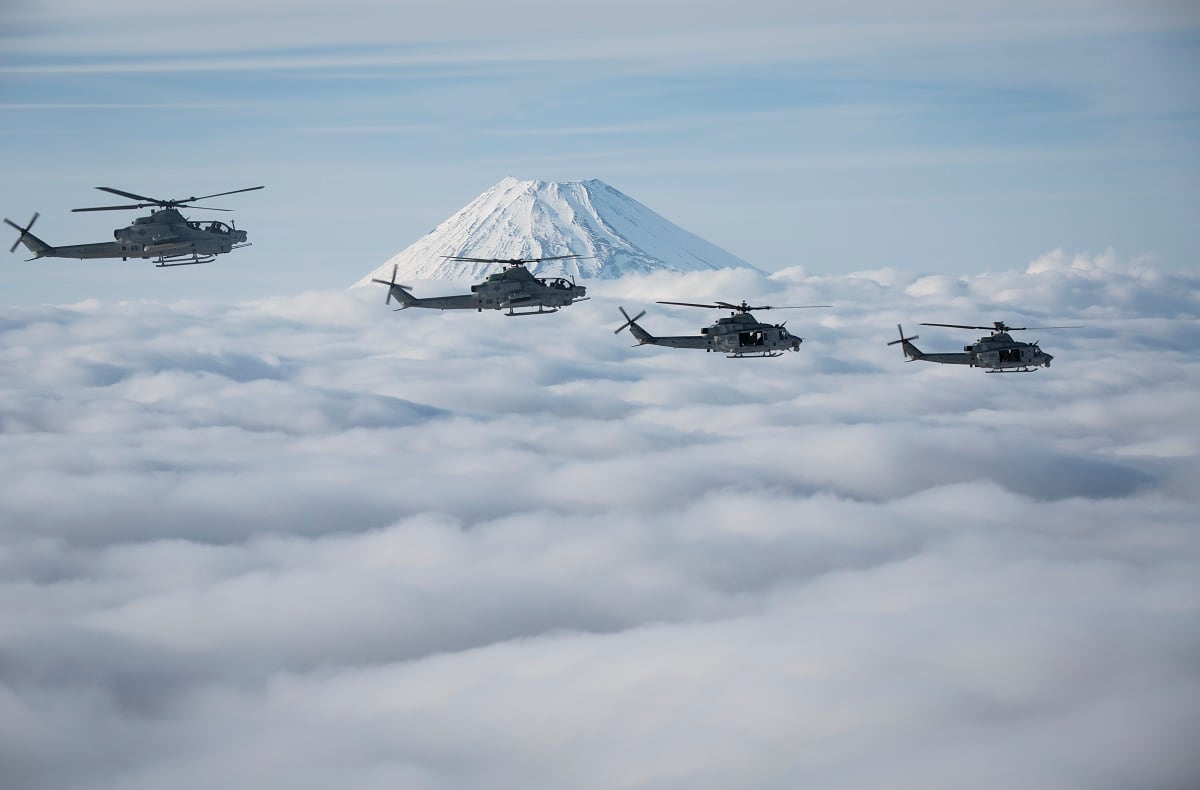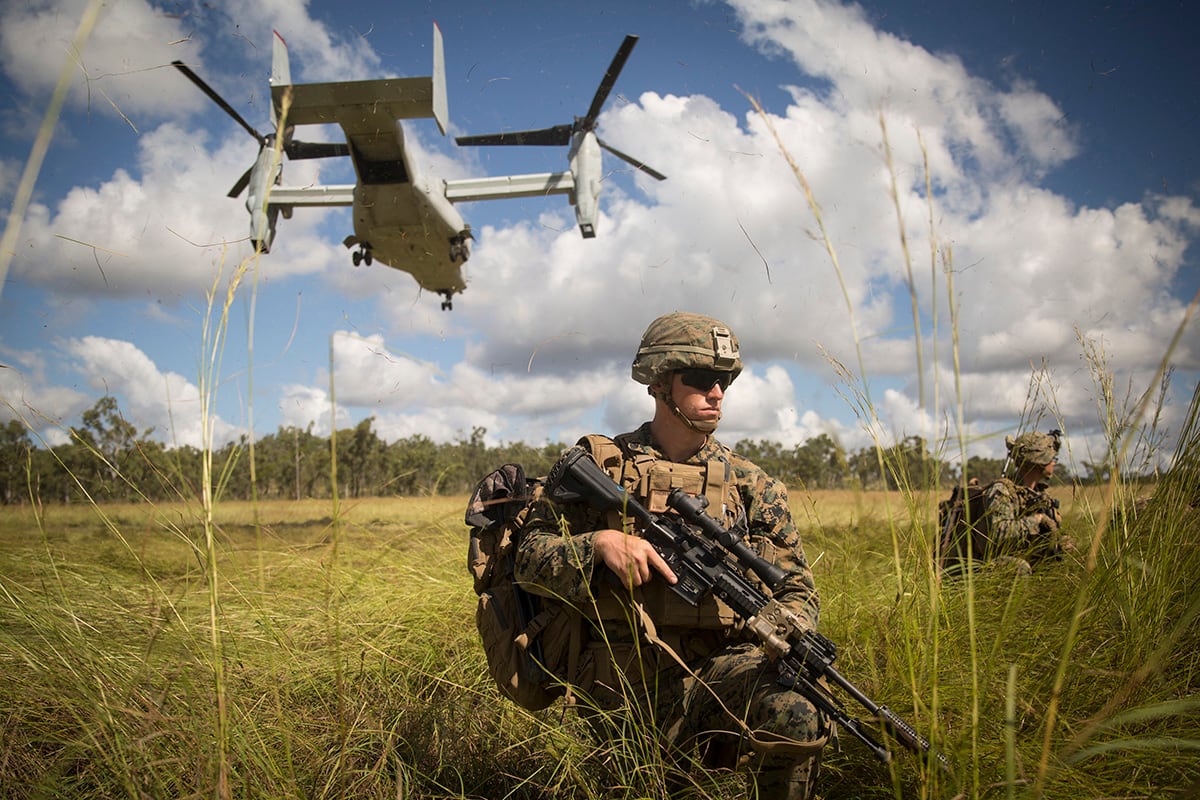Osprey and Marine F-35 aviators can fatten their wallets with nearly $280,000 if they sign lengthy eight-year contracts, according to Marine officials.
The wad of cash is part of the Corps’ fiscal year 2020 aviation bonus aimed at enticing pilots to sign longer contracts and plug the flood of Marine aviators trading in their military wings to fly civilian skies.
The Corps dished out aviation bonuses in both fiscal years 2018 and 2019 — the first such bonuses since 2011.
The new aviation bonuses target captains and majors within the F-35, F/A-18 Hornet, AV-8 Harrier, MV-22, C-130 Hercules, UH-1 Huey, AH-1 Cobra and CH-53 Stallion communities, according to Marine spokesman Maj. Craig Thomas.

“As the nation’s expeditionary force in readiness, the Marine Corps must retain qualified aviators to meet current and future warfighting requirements,” Lt. Gen. Michael A. Rocco, the deputy commandant for Manpower and Reserve Affairs, told Marine Corps Times.
“The purpose of the aviation bonus remains the same — it adds one more positive benefit when Marine aviators weigh their options whether to continue serving or move on from the military,” Rocco said.
This year’s bonuses have several notable differences to include an eight-year contract option for Osprey and F-35 pilots, no lump sum payment option and weapon systems officers are no longer eligible for the bonuses, according to Marine officials at Manpower and Reserve Affairs.
The Corps is also ditching the two-year-contract option.
F-35 and Osprey pilots are getting the biggest pot of money.

MV-22 and F-35 pilots with less than 11 years of commissioned service can opt for an eight-year contract and net nearly $280,000 paid out annually at $35,000 a year.
These pilots have the option of three, four, five, six and eight-year contracts depending on years of commissioned service.
Bonuses for Osprey and F-35 pilots range from $75,000 to $280,000, depending on contract length and years of commissioned service.
The Osprey and F-35 fields are experiencing a bit of a manpower crunch.
According to data obtained by Marine Corps Times through a government record’s request, the Osprey and F-35 pilots in the Corps are manned at 69 percent and 33 percent respectively. The manpower data is current as of February.
Hornet, Harrier and C-130 pilots are eligible for bonuses ranging from $75,000 to $210,000, depending on contract length and years of commissioned service. Pilots who hail from these fields have the option of three, four, five and six-year contracts, which also are dependent on years of commissioned service. These pilots are staffed between 72 percent and 84 percent.
CH-53, UH-1 and AH-1 pilots can net $45,000 to $150,000 depending on years of commissioned service and contract length. These pilots also have three, four, five and six-year contract options.

Huey and CH-53 pilots are manned at 91 percent and 94 percent respectively, while Cobra pilots are slightly overmanned at 102 percent, according to the February manpower data.
The contract details and dollar figures for the new bonuses were provided by Marine Corps Manpower and Reserve Affairs.
The new aviation bonus “offers substantial monetary values and longer contracts to provide increased stability for our aviators to meet mission requirements and increase the lethality of the Marine Air-Ground Task Force,” Rocco explained.
The Corps previously has said that its aviation bonuses are intended to influence a decision.
And it appears the pilot bonuses are relatively popular. Thomas told Marine Corps Times in December that nearly 78 percent of eligible pilots accepted the fiscal year 2018 aviation bonuses.
Rocco said that “Marines usually stay in uniform” because they like being Marines.
“I hope our aviators see this expanded bonus program as a genuine effort to keep their talent and leadership in the squadrons to continue flying and mentor the next generation of aircrews," Rocco said.
Shawn Snow is the senior reporter for Marine Corps Times and a Marine Corps veteran.





